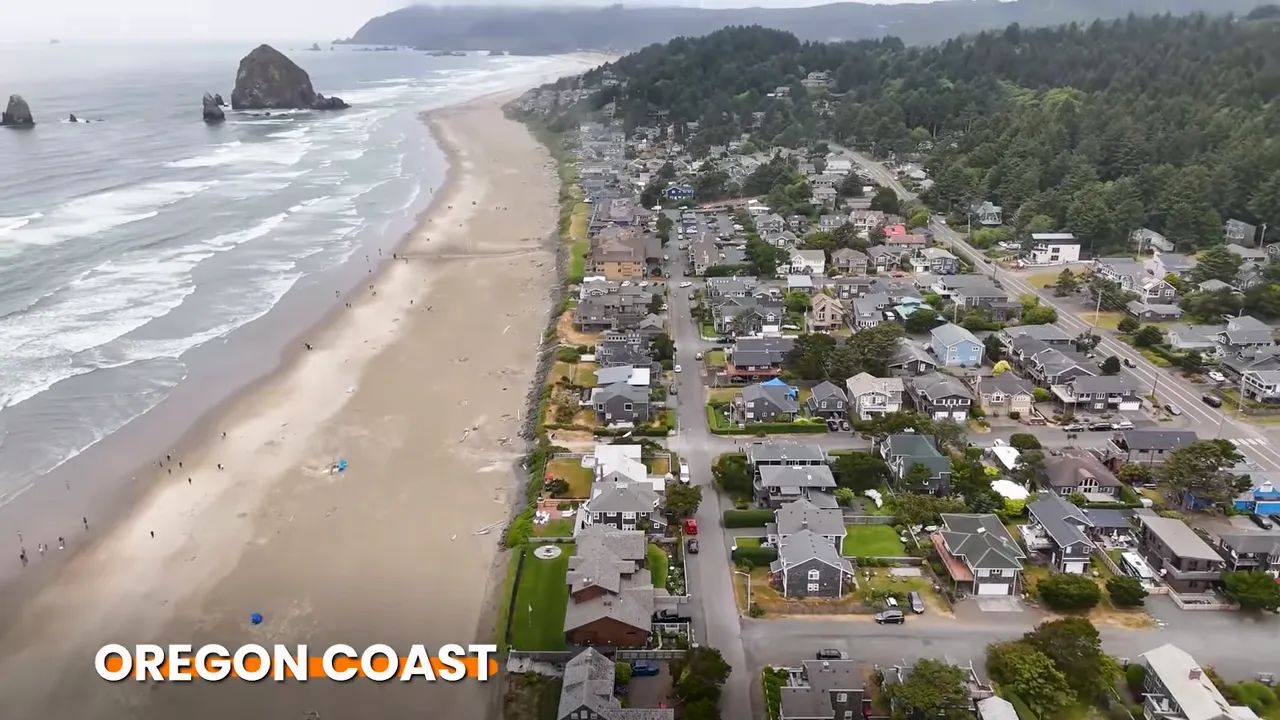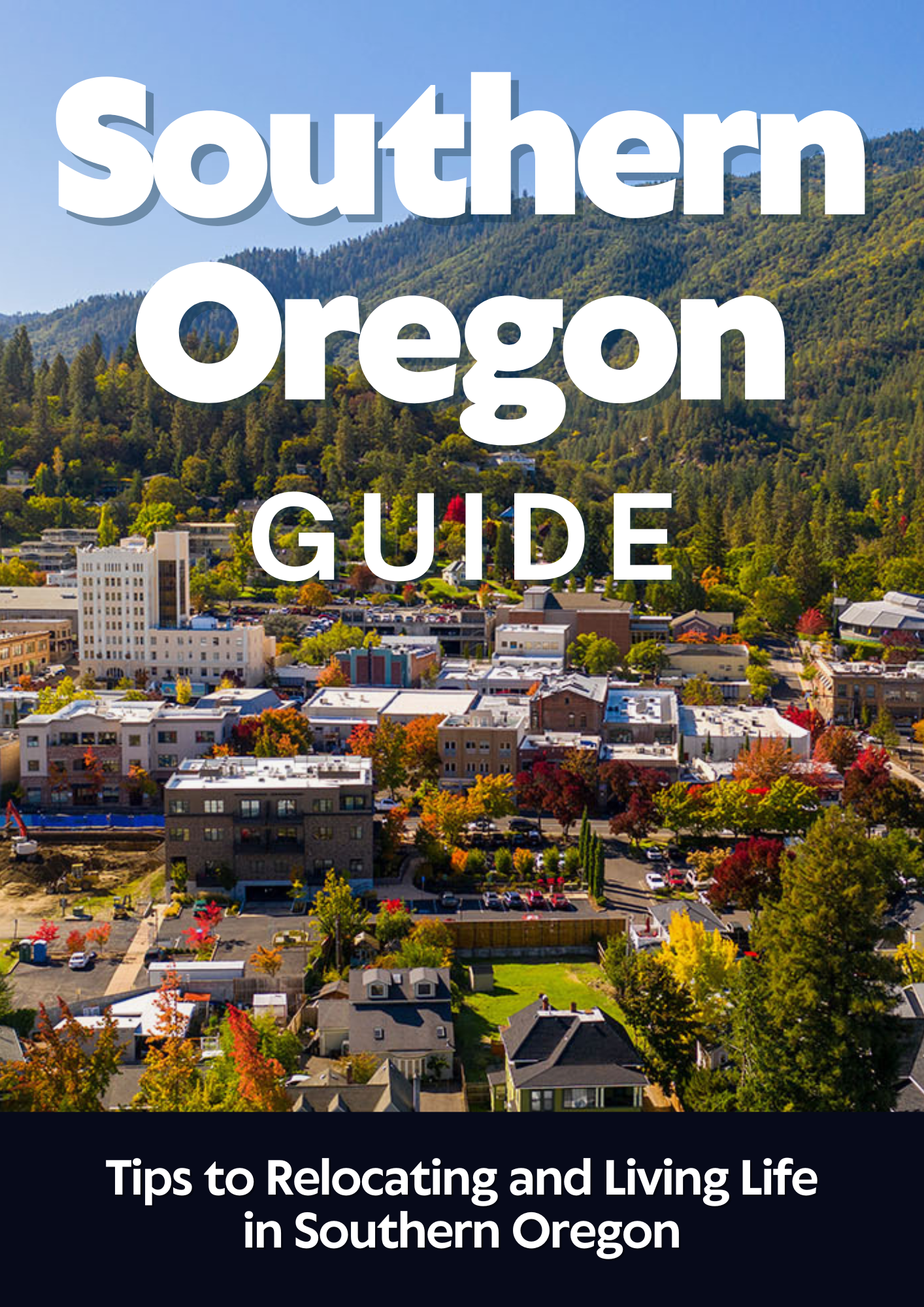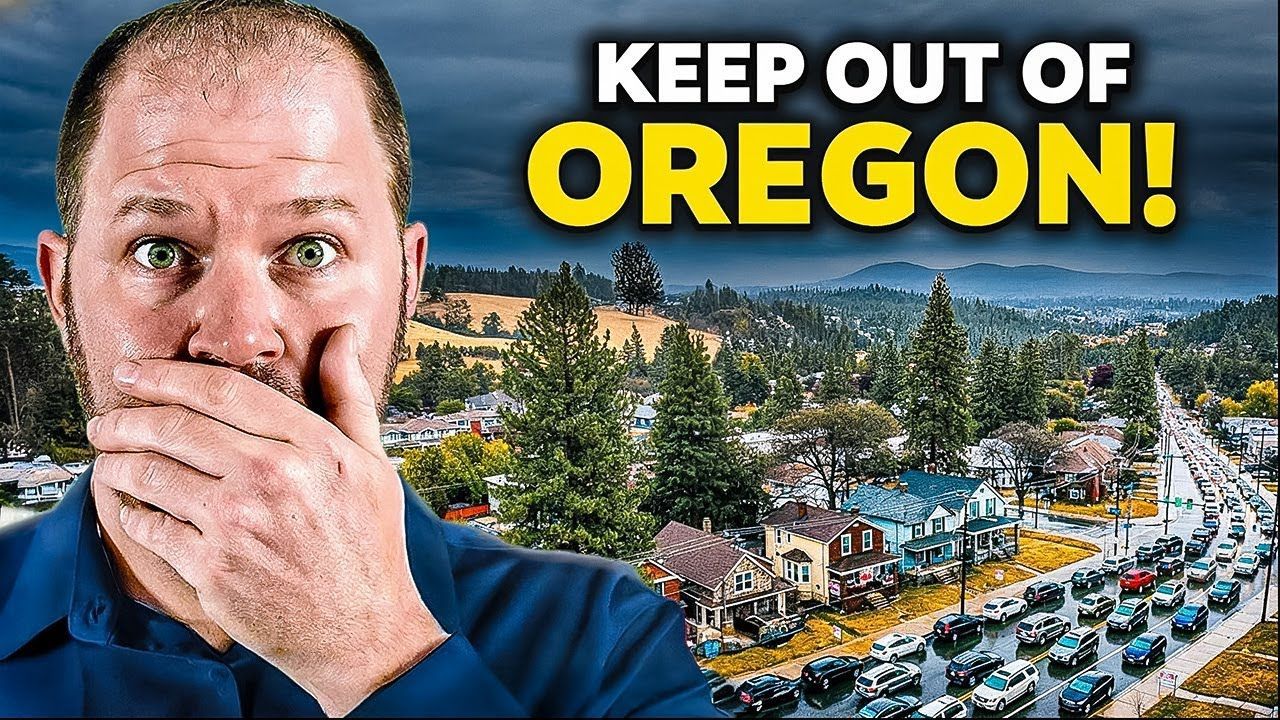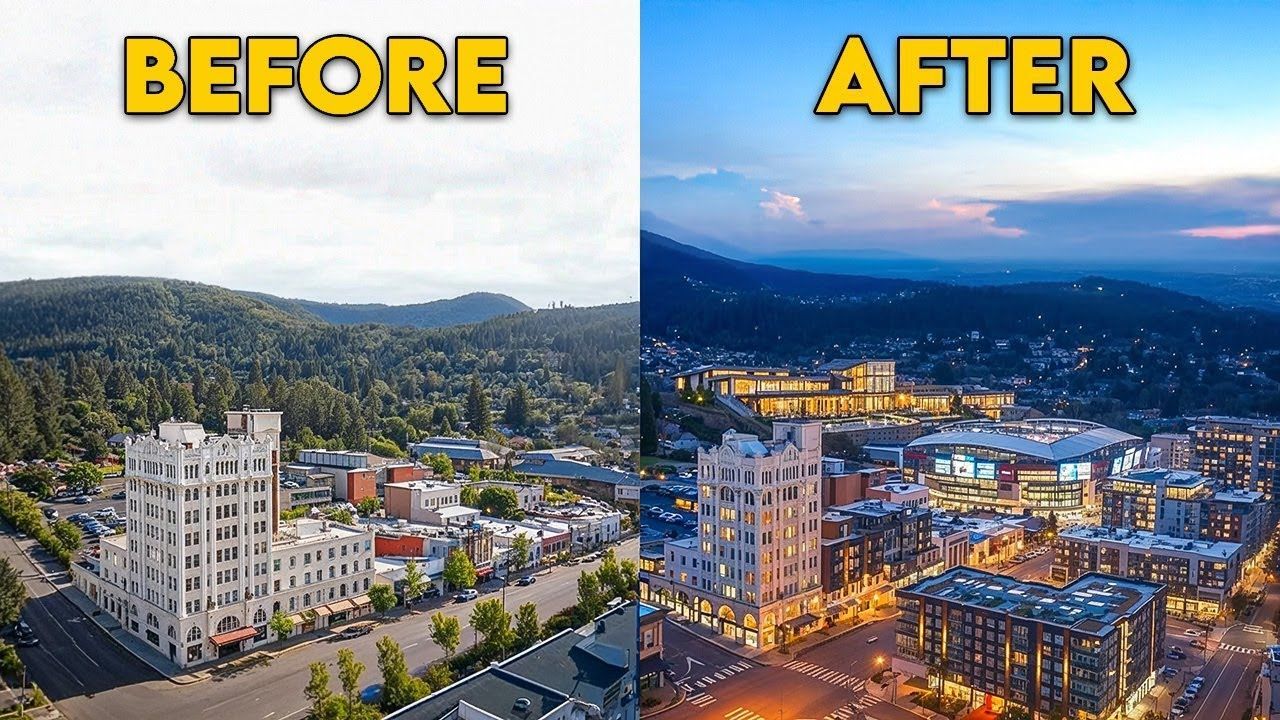Southern Oregon vs Oregon Coast: Which is BEST in 2025?
For years I've helped hundreds of families relocate and retire here, and one of the most common questions I hear is simple: Southern Oregon vs Oregon Coast — which one should I choose? In this article I'll walk you through the real differences, the trade-offs, and the things most people don't talk about. I’ll give you a practical, honest assessment based on real conversations with buyers, long-term market observations, and what daily life actually looks like in both places.
Table of Contents
- Introduction
- #1 Weather & Climate
- #2 Jobs & Economy
- #3 Real Estate & Housing
- #4 Lifestyle & Community
- #5 Retirement & Relocation
- #6 Danger
- Big Picture Comparison: Romanticized Coast vs Realized Inland Life
- Practical Tips for Choosing Between the Two
- FAQs About Southern Oregon vs Oregon Coast
- Conclusion — Where Should You Choose?
Introduction
Dreaming about life on the Oregon Coast? You’re not alone. With its dramatic ocean views, charming small towns, and laid-back vibe, it’s easy to see the appeal. But many people who imagine settling by the coast often find them`elves choosing Southern Oregon instead. Why? The differences between the two regions are bigger than you might think. In this blog, we’ll dive into the realities of both areas—weather, lifestyle, housing, and more—so you can decide which is the better fit for your dream move.

#1 Weather & Climate
Weather is the most immediate difference between Southern Oregon and the Oregon coast — and it often determines whether someone can happily live somewhere full time.
Oregon coast: dramatic, damp, and moody
The Oregon coast is famous for its dramatic skies, pounding surf, and moody fog. That atmosphere is beautiful and perfect for weekend escapes and vacation photos. But the reality for full-time residents often includes:
- Roughly 200 days of rain or drizzle a year in many coastal towns — frequent cloud cover, persistent dampness, and lots of fog.
- Salt in the air that accelerates rust and corrosion on cars, metal fixtures, and exterior home components. Expect higher maintenance costs and more frequent repairs.
- A climate that makes outdoor activities less predictable. Storms and fog can limit daily outdoor time and affect hobbies like biking, hiking, and gardening.
Southern Oregon: sun, four seasons, and outdoor-friendly weather
Southern Oregon, anchored by cities like Medford, Ashland, and Grants Pass, typically gets about 200 days of sunshine per year. The climate is often compared to inland California valleys like Redding or even parts of Sacramento. That translates into:
- Four defined seasons — warm, pleasant summers, colorful autumns, mild winters, and lively springs.
- Greater consistency for outdoor lifestyles: year-round hiking, biking, golfing, and water sports on rivers and lakes.
- Clear skies that generally make property maintenance easier and reduce corrosion concerns.
Bottom line: if you crave dramatic coastal weather and don’t mind the damp, the coast delivers. If you want reliable sunny days and outdoor predictability, Southern Oregon will probably suit your daily life better.
#2 Jobs & Economy
Where you live for lifestyle also needs to make sense economically. The types of jobs available and the overall economy have a huge impact on long-term livability.
Oregon coast: tourism-driven and seasonal
Most coastal towns depend heavily on tourism, hospitality, and seasonal industries such as commercial fishing. That creates a local economy with:
- Limited availability of year-round white-collar and high-paying professional jobs.
- Strong seasonality — more jobs and activity in summer months, quieter winters with layoffs or reduced hours for hospitality workers.
- An ongoing trend of outmigration for people seeking stable year-round employment.
Southern Oregon: healthcare, education, wine, and logistics
Southern Oregon’s economy is broader and more stable. Key anchors include:
- Healthcare — a major employment sector with multiple hospitals (Asante, Providence and others) and specialized medical services.
- Education — Southern Oregon University and Rogue Community College add jobs and cultural activity.
- Wine industry — the Rogue Valley has exploded in popularity and contributes both jobs and tourism with over 100 wineries.
- Distribution & logistics — Southern Oregon’s position makes it a convenient hub for Northern California and Pacific Northwest distribution.
- Remote work appeal — affordability and sunshine attract remote professionals who bring income without being tied to local seasonal industries.
If you need stable, year-round career options or want a place that supports remote work and healthcare careers, Southern Oregon has more to offer than most coastal towns.
#3 Real Estate & Housing
Real estate is often the deciding factor for people choosing where to relocate. Inventory, maintenance needs, and long-term appreciation are especially important.
Oregon coast: limited inventory, older homes, and premium prices
Coastal towns tend to be small, which means limited housing inventory. Other realities include:
- Many homes are older — mid-20th century construction is common — and require more maintenance due to moisture and salt exposure.
- Some premium coastal towns (Cannon Beach, Seaside, Newport) command high prices but often deliver properties that are best enjoyed seasonally rather than year-round.
- Higher percentage of vacation rentals and investment properties, making neighborhoods sometimes feel transient rather than community-focused.
Southern Oregon: variety, new construction, and appreciation
Southern Oregon offers broader inventory across Medford, Ashland, Grants Pass, Jacksonville, and surrounding rural areas:
- Homes at every price point — starter homes, new construction, and multi-million-dollar estates, including riverfront properties and acreage.
- More opportunities to buy newer homes with modern energy efficiency and lower maintenance expectations.
- Strong demand from out-of-state buyers has driven appreciation in many areas, giving homeowners value growth over time.

For buyers, Southern Oregon offers more choice and typically better long-term value for everyday living as opposed to a second-home coastal purchase.
#4 Lifestyle & Community
Thinking beyond the house itself, community culture and daily lifestyle play a huge role in satisfaction. Let’s break down what life looks like in each region.
Oregon coast: quaint towns and tourism-driven culture
The coast delights weekend visitors and vacationers with:
- Charming small towns and scenic public spaces.
- Tourist-driven restaurants, gift shops, and seasonal events.
- But limited shopping, fewer specialized restaurants, and constrained cultural offerings for year-round residents.
- Medical care and airports may be hours away; coastal airports are small and offer limited destinations.
Southern Oregon: culture, recreation, and convenient access
Southern Oregon balances natural beauty with consistently available amenities:
- Ashland is nationally recognized as a top small arts town — home of the Oregon Shakespeare Festival.
- Jacksonville hosts outdoor music series, festivals, and historical charm.
- Rogue Valley wine culture — recently rated among top U.S. wine regions — with 100+ wineries offering year-round tasting, events, and culinary tourism.
- Legendary Rogue River for rafting and fishing, easy access to Crater Lake National Park, Mount Ashland skiing, and Pacific Crest Trail segments for hikers.
- Medford Rogue Valley International Airport provides direct flights to major hubs like Portland, Seattle, San Francisco, Los Angeles, Denver, Phoenix, and Salt Lake City — making travel easy.
The comfortable blend of culture, outdoor recreation, and transport access makes Southern Oregon attractive to families, remote workers, and retirees alike.
#5 Retirement & Relocation
Many visitors weigh both regions as options for retirement or relocation. What fits best depends on what you want in daily life and long-term support systems.
Oregon coast: dreamy but sometimes impractical for full-time living
The coast often appeals to dreamers and vacation buyers. However:
- Isolation, limited medical specialists, and stretched infrastructure can be real challenges for older adults who need reliable access to healthcare.
- Damp, cooler climate can be hard on people with joint or respiratory issues.
- Many retirees choose a coastal property as a second home rather than a primary residence due to these constraints.
Southern Oregon: a premier relocation hub
Southern Oregon, particularly the Rogue Valley, has become a relocation magnet for people from California, Nevada, Arizona, Utah, and Texas because it offers:
- Lower cost of living than many West Coast cities and a more predictable climate.
- Strong medical infrastructure with multiple hospitals and specialists.
- A drier climate that many find easier on joints and respiratory conditions.
- Active retirement communities, social networks, cultural activities, and volunteer opportunities that build long-term connections.
For people planning to retire or relocate permanently, Southern Oregon often provides a better balance of lifestyle, health support, and community than the coast.
#6 Danger
Every region has natural risks. Being informed helps you plan, mitigate, and feel confident in your long-term choice.
Oregon coast risks
The coast faces risks that are unique to its setting:
- Storms, flooding, and landslides — especially during strong winter systems.
- Tsunami evacuation zones along many coastal communities — not a daily concern, but a real hazard for low-lying areas.
- Smaller emergency medical infrastructure and increased transport times to tertiary care centers if serious medical events occur.
- Accelerated wear on property and vehicles due to constant moisture and salt-air corrosion.
Southern Oregon risks
Southern Oregon’s primary natural hazard is wildfire. Important considerations:
- Dry summers and periodic lightning storms can spark wildfires. When fires occur, air quality can become a significant health concern.
- Wildfire risk varies by micro-region — valley floors, river corridors, and forested foothills all have different exposure levels.
- Emergency infrastructure here is generally stronger, but evacuations and smoke events can still disrupt life seasonally.
I’ve made resources specifically about wildfire and air-quality planning because this topic often causes confusion. In short: both regions present hazards, but they’re different in nature. For many buyers, Southern Oregon feels safer year-round when comparing the frequency and severity of natural-disaster risks versus the coast.
Big Picture Comparison: Romanticized Coast vs Realized Inland Life
When you summarize the differences, a clear theme emerges. The Oregon coast feels romanticized in photos — its beauty is undeniable — but it often doesn’t realize into practical, long-term full-time living for many people. Southern Oregon, by contrast, tends to deliver a balance:
- Climate: Coast = cooler and damp; Southern Oregon = sunnier and more predictable.
- Economy: Coast = tourism and seasonal work; Southern Oregon = diverse job base (healthcare, education, wine, logistics).
- Housing: Coast = limited inventory, older homes, premium for ocean proximity; Southern Oregon = broader inventory, new builds, and value-driven appreciation.
- Daily life: Coast = wonderful for weekends and vacations; Southern Oregon = livable for decades with year-round cultural and recreational options.
- Safety: Coast = storm, landslide, and tsunami exposure in certain zones; Southern Oregon = wildfire risk but generally stronger access to emergency services.

If your lifestyle needs prioritize weekend romance and ocean views, the coast may be ideal as a vacation property. If you want a full-time home with predictable days, varied job and cultural opportunities, and a community that supports long-term living — Southern Oregon should be at the top of your list.
Practical Tips for Choosing Between the Two
Before you make a move, consider the following practical steps:
- List your non-negotiables: climate preference, healthcare access, airport proximity, and job requirements.
- Spend an extended period (two weeks or more) living in the area during different seasons to test weather and community life.
- Inspect homes for weather-related wear: coastal properties will often have more corrosion and potential mold issues; look for recent upgrades to roofing, siding, and heating systems.
- Ask about local services: pharmacies, specialists, grocery options, and emergency response times.
- Research micro-climates and wildfire risk zones if considering Southern Oregon — not all neighborhoods carry the same exposure.
FAQs About Southern Oregon vs Oregon Coast
Which area has lower property taxes or cost of living?
Cost of living varies by town and by county. Generally, many Southern Oregon communities offer lower overall living costs and more affordable housing options than premium coastal towns, but some sought-after Southern Oregon neighborhoods (Ashland, certain riverfront properties) can be pricier. Always compare county property tax rates, utility costs, and HOA fees when evaluating specific homes.
Is the Oregon coast bad for people with arthritis or respiratory issues?
The damp, cool climate can aggravate joint pain for some individuals and can worsen certain respiratory conditions depending on mold and indoor air quality. Southern Oregon’s drier climate is often easier on joints and respiratory health, although wildfire smoke during certain seasons can create periodic air-quality challenges.
Can I find good healthcare on the Oregon coast?
Smaller coastal towns generally have limited hospital and specialist options. For more complex medical needs, travel to larger centers is often required. Southern Oregon has multiple hospitals and a broader base of specialists, making it a stronger choice for people who need dependable access to healthcare.
Is it harder to sell a home on the coast?
Coastal homes can be highly desirable as vacation properties, but resale can depend on seasonality and neighborhood demand. Some coastal markets are dominated by vacation rentals which may limit buyer pools for someone seeking a primary residence. Southern Oregon’s broader buyer base and steady relocations tend to support more consistent resale demand.
How should I prepare for wildfire risk if moving to Southern Oregon?
Mitigation steps include creating defensible space around your home, using fire-resistant building materials where possible, having an evacuation plan, staying informed using local emergency alerts, and ensuring adequate home insurance. Talk to local fire districts and neighbors about community mitigation efforts.
Conclusion — Where Should You Choose?
The right answer to "Southern Oregon vs Oregon Coast" depends on how you define the ideal daily life. If your heart is set on ocean views, storm-watching, and the romance of the shoreline, the Oregon coast is wonderful for weekends and seasonal enjoyment. But if your goal is a practical, long-term home with sunny days, varied jobs, robust healthcare, cultural life, and a strong sense of community — Southern Oregon is the place that consistently delivers.
I've walked buyers through both options many times. Often, people come wanting the coast and end up choosing Southern Oregon once they experience the practical differences firsthand. If you're considering a move, I’d love to help you evaluate neighborhoods, compare properties, and make a plan that fits your lifestyle and long-term goals.
Reach out anytime at 541-827-8767 — whether you want to explore Southeastern Oregon neighborhoods, schedule a tour, or download relocation resources. I’ve helped hundreds of families relocate and can help you make this decision with confidence.

Buying Southern Oregon
At Buying Southern Oregon, we are a dynamic team dedicated to helping you achieve your real estate goals. Combining Brian Simmons’ deep market expertise and Josh Berman’s strong negotiation skills, we provide personalized service and local knowledge to ensure a seamless and rewarding experience. Whether you’re buying, selling, or relocating, we’re here to guide you every step of the way and make your Southern Oregon real estate journey a success.













